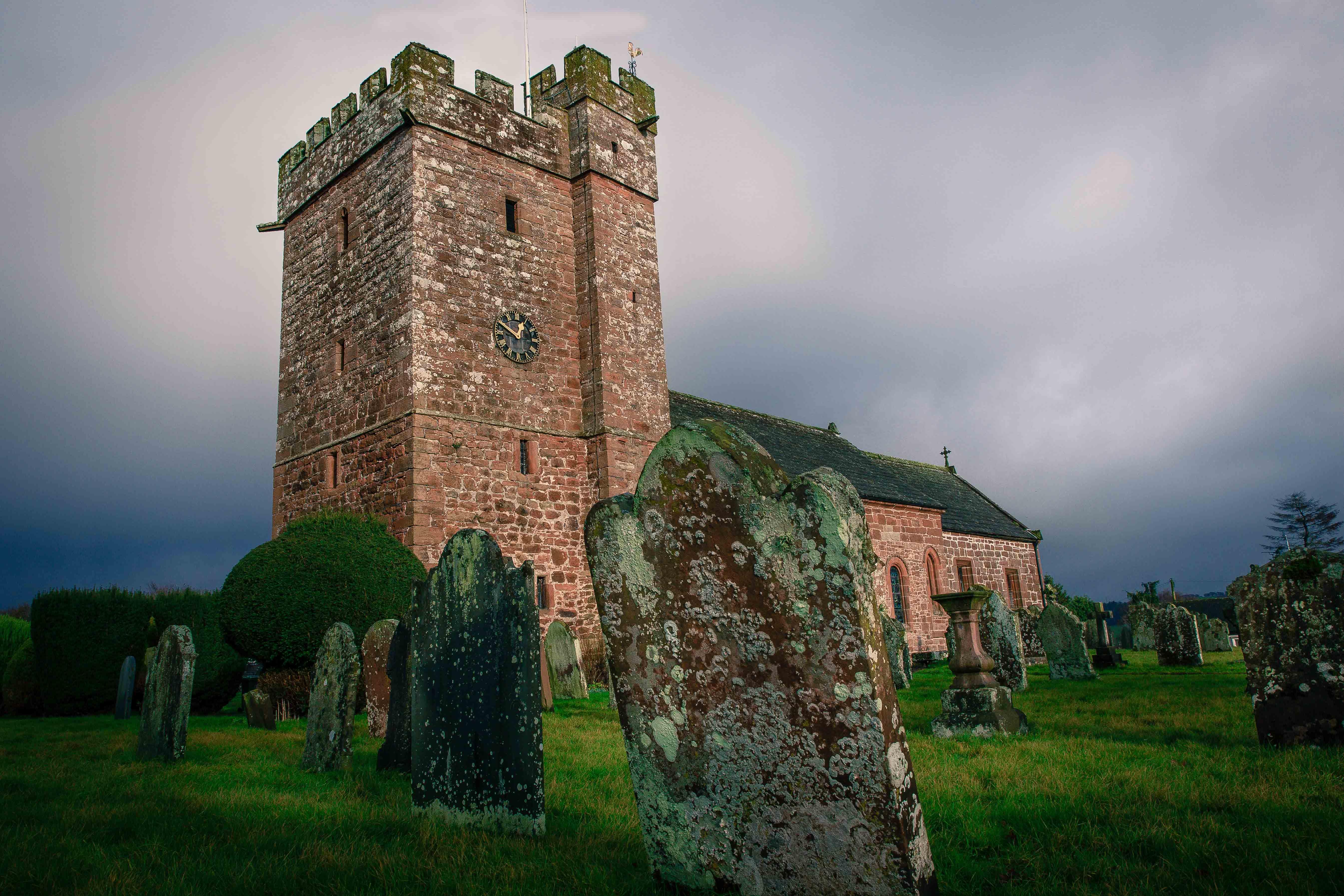St Michael & All Angels
Addingham, Cumbria
This Grade II* listed church dates from the early 16th century with much reused early medieval stonework from a nearby 9th century church destroyed by the River Eden.

There has probably been a church in Great Salkeld since 880 AD, when the body of St Cuthbert was rested here after being brought from Holy Island.
Great Salkeld, Cumbria
Rebuilding took place in 1080. The Pele Tower was added in 1380, with an iron door for defence of the inhabitants against the Scots.
The entrance is only 2ft 7in wide, another indication of a fortified church. The pillars and capitals of the entrance appear to date around 1000. They are carved with figures of beasts, birds and serpents. In the tower are various slabs which were probably gravestones from earlier times. One contains symbols of the horseshoe and hammer, indicating it probably covered the grave of a blacksmith. There is a peel of six bells, and a clock manufactured in 1892.
The first church was probably built about AD 880, one of forty marking the resting places of the body of St Cuthbert as it was carried away from Holy Island by monks fleeing from the invading Danes.
The ‘sumptuous and barbaric’ (Pevsner) Norman doorway inside the porch, with its three orders of columns and capitals supporting a triple arch with grotesquely carved keystones, dates from a late 11th century rebuilding of the church.
The broad and massive west tower, with heavily studded iron door and narrow stair, was erected in 1380 as a place of refuge from marauding raiders. A new chancel in the Perpendicular style was added in 1480 and the nave walls were raised to correspond.
On the south side of the nave is a fine memorial window, installed in the late 1920's, which shows St. Cuthbert as an early bishop near his cell on Farne Island with an eider duck by his side representing the birds, which were drawn to him as they were centuries later to St Francis of Assisi. The same eider duck, or ‘Cuddy's’ duck, features in the impressive tapestry hanging on the north wall of the nave.
The stone effigy (1319) lying to the south of the altar is of Thomas de Caldebec, priest. The armour (mid 17th century) hanging on the west wall above the tower door was collected after a local skirmish between Royalists and Parliamentarian forces in the Civil War.
A peal of six bells (1882) hangs in the tower; the clock was added in 1892, and the church has a fine organ made and installed by Harrison & Harrison of Durham in 1889.
There is also a kitchenette in church with tea/coffee facilities.
Addingham, Cumbria
This Grade II* listed church dates from the early 16th century with much reused early medieval stonework from a nearby 9th century church destroyed by the River Eden.
Kirkoswald, Cumbria
This is one of Cumbria's finest small churches, hidden away down a stone walk, with, uniquely, a stone bell tower on the hill above.
Gamblesby, Cumbria
A traditional sandstone Victorian Methodist Church and attached School Room restored in 2021 as a vibrant worship and community space.